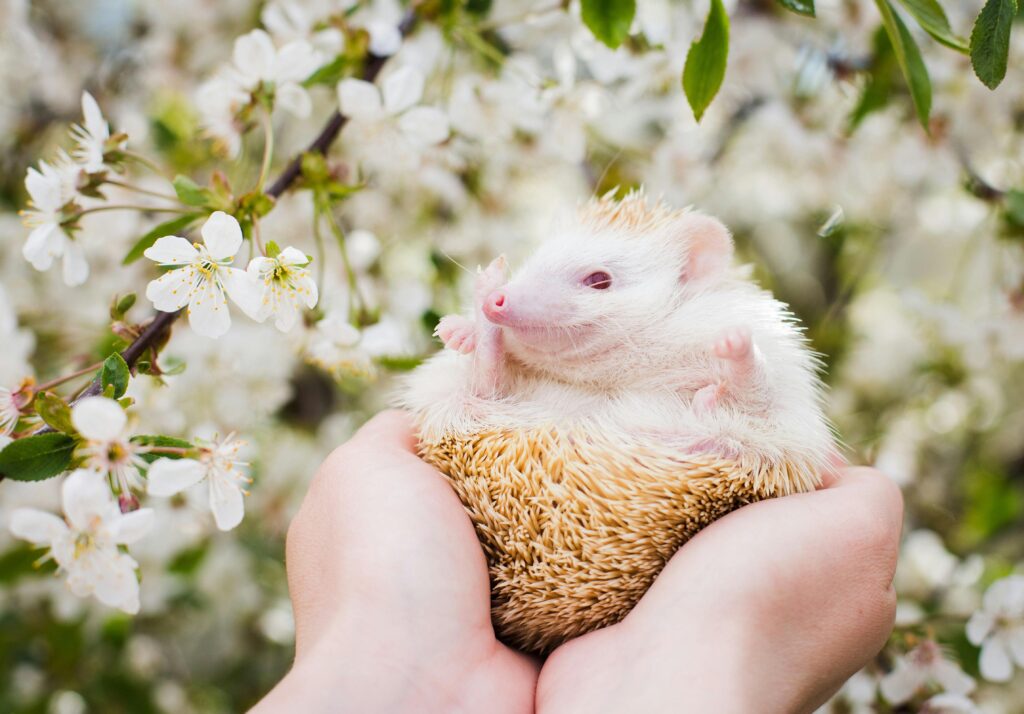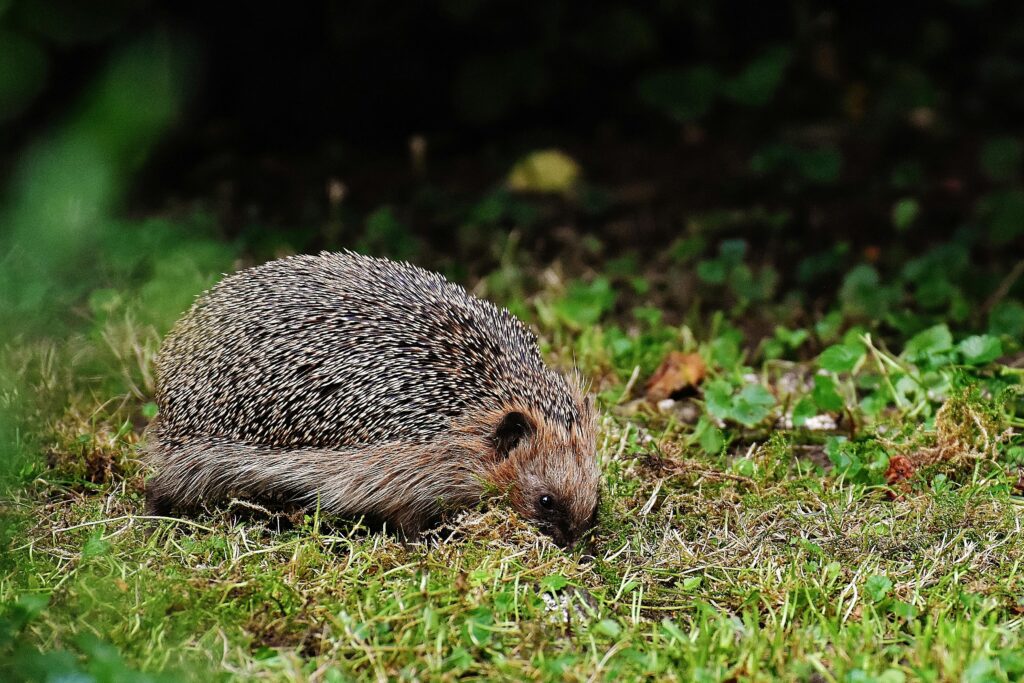Hedgehogs are small, nocturnal mammals known for their distinctive spines and unique behaviors. Native to Europe, Africa, and Asia, these charming creatures have gained popularity as pets in recent years. Despite their prickly appearance, hedgehogs are gentle and curious animals that thrive both in the wild and in domesticated environments. Their ability to roll into a tight ball for protection, their quirky eating habits, and their solitary lifestyle make them intriguing subjects for study and admiration.
In this article, we will delve into the world of hedgehogs, exploring their biology, habits, and the reasons behind their growing popularity as exotic pets. We will also cover key information on their care, offering insights for anyone considering a hedgehog as a pet.

Hedgehog Biology and Natural Habitat
Hedgehogs belong to the Erinaceidae family, which includes around (17) different species. These species can be found in a wide range of habitats, from dense forests to open grasslands. Hedgehogs are insectivores, which means their diet primarily consists of insects, but they also enjoy a variety of other foods like fruits, vegetables, and even small vertebrates. Their spiny coats, composed of thousands of stiff, hollow hairs, serve as their primary defense mechanism against predators.
1.Physical Characteristics

Hedgehogs are easily recognizable due to their spiky appearance. Their spines, which cover their backs, are modified hairs made of keratin, the same protein found in human hair and nails. These spines are not poisonous or barbed, but they offer excellent protection against predators. When threatened, a hedgehog will curl into a tight ball, exposing only its spines and making it difficult for attackers to reach its vulnerable parts.
2.Nocturnal Behavior

One of the most distinctive traits of hedgehogs is their nocturnal nature. These animals are most active during the night, spending their time foraging for food, exploring their environment, and interacting with other hedgehogs. In the wild, they have a keen sense of smell and hearing, which helps them locate food even in the dark. Domesticated hedgehogs maintain this nocturnal behavior, often becoming more active when their owners are asleep.
3.Diet and Foraging Habits

Hedgehogs are opportunistic feeders. In the wild, they consume a wide range of food, including insects, snails, worms, and even small reptiles. They have a strong sense of smell, which aids them in finding hidden food sources. In captivity, pet owners provide hedgehogs with a balanced diet consisting of specially formulated hedgehog food, supplemented with fresh fruits, vegetables, and occasional insects. A varied diet helps maintain their health and prevent obesity.
4.Hedgehogs as Pets

Hedgehogs have become increasingly popular as exotic pets due to their low-maintenance needs and unique personalities. However, owning a hedgehog requires proper care and attention. They need a warm, safe environment, a proper diet, and regular handling to remain friendly and comfortable around humans. Hedgehogs are also solitary animals, meaning they prefer to live alone and should not be housed with other hedgehogs.
5.Health and Lifespan

The average lifespan of a domesticated hedgehog is between (4 to 6 years), although with proper care, some can live up to (10 years). Regular checkups with a vet familiar with exotic pets are essential to monitor their health. Common health issues in hedgehogs include obesity, dental problems, and skin conditions like mites. It’s also important to provide them with a clean, stress-free environment to ensure they stay healthy.
6.Breeding and Reproduction

Hedgehogs typically breed during the warmer months, and their gestation period lasts about (35 days). A female hedgehog can give birth to up to six hoglets at a time. The young are born with soft spines, which harden shortly after birth. Hedgehog mothers are known to be very protective, and disturbances during the first few days after birth can cause them to reject or even harm their young. In the wild, the young are weaned at about (4 to 6) weeks old and become independent soon after.
7.Hedgehogs in the Wild

In their natural habitat, hedgehogs play a crucial role in controlling insect populations. They are known for their long-distance foraging behavior, often covering several miles in search of food. They also hibernate during the colder months, relying on fat reserves to survive. Hedgehogs are primarily solitary, interacting with others only during the mating season or when food sources overlap.
8.Conservation Status

Most hedgehog species are not currently considered endangered, but habitat loss and road accidents have negatively impacted their populations in some areas. In Europe, conservation efforts are underway to protect wild hedgehog populations, including creating safe habitats and educating the public about the dangers posed by urbanization. In the UK, hedgehog-friendly gardens have become a popular way for homeowners to help local populations.
9.Cultural Significance

Hedgehogs have appeared in folklore and popular culture for centuries. In some cultures, they are considered symbols of good fortune, while in others, their nocturnal habits have led to associations with mystery and magic. Today, hedgehogs are beloved by many, not only as pets but also as iconic figures in books, films, and cartoons. The famous video game character Sonic the Hedgehog has played a significant role in bringing attention to these unique creatures.
10.Hedgehog Care Tips

- If you’re considering a hedgehog as a pet, it’s important to be well-informed about their needs. Here are a few essential tips:
- Housing: Provide a spacious, escape-proof enclosure with plenty of bedding for burrowing.
- Temperature: Hedgehogs need a warm environment, ideally between 72-80°F (22-27°C), to prevent hibernation.
- Diet: Offer a balanced diet of hedgehog food, fresh fruits, vegetables, and occasional treats like mealworms.
- Handling: Regular handling will help your hedgehog get used to you and reduce stress.
- Veterinary Care: Regular vet visits are essential to monitor health and prevent diseases.
Conclusion
Hedgehogs are fascinating creatures with a long history of interaction with humans, both in the wild and as pets. Their distinctive spines, nocturnal habits, and solitary nature make them truly unique among mammals. For those who choose to welcome a hedgehog into their home, understanding their needs and behaviors is key to providing a happy and healthy life for these spiky companions.
Whether in the wild or as a pet, hedgehogs continue to capture our imagination with their quirky personalities and resilient nature. By learning more about these incredible animals, we can ensure their well-being and contribute to their preservation for future generations.




